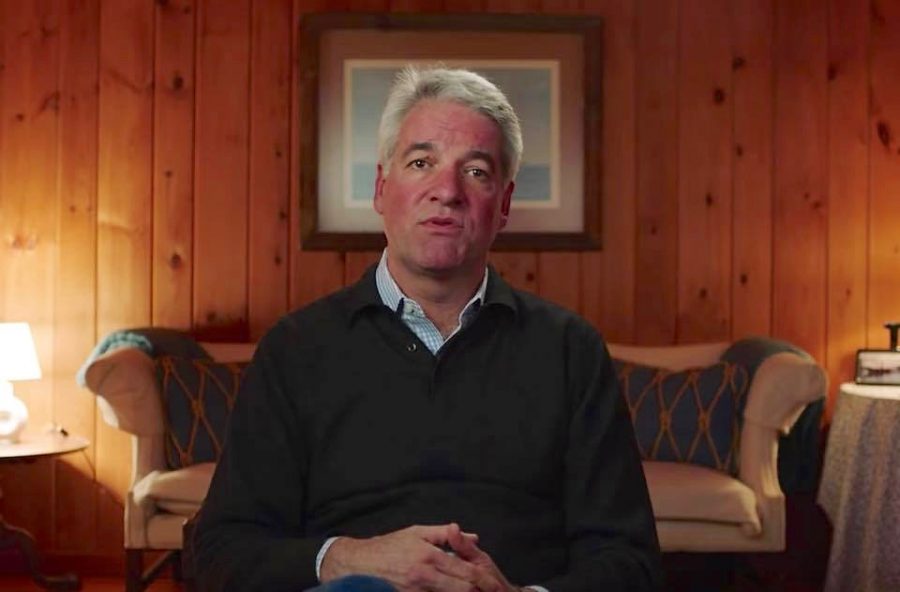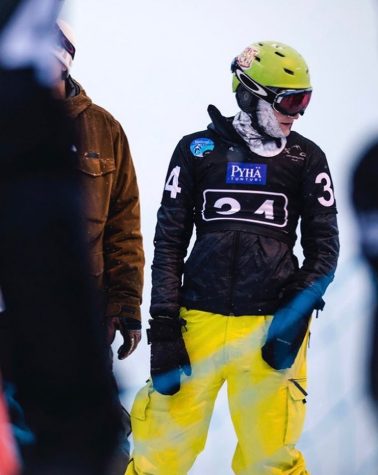Fyre Festival Docs: Different Perspectives, Same Problems
Entrepreneur Billy McFarland drew much criticism after the Fyre Festival failed to live up to its outrageous promises. (Courtesy of Facebook)
January 30, 2019
The disastrous Fyre Festival of 2017 was perfect documentary material. Helmed by rapper Ja Rule and largely unknown entrepreneur Billy McFarland, the festival was marketed aggressively through social media and famous models.
They promised a legendary event on a secluded Caribbean island previously owned by Pablo Escobar with performances by popular artists such as Blink-182 and Drake. This resulted in thousands of social media “influencers” stranded in relief tents left over from Hurricane Matthew. They not receive the promised luxuries, or even basic needs.
The ensuing, inevitable litigation revealed the circumstances around the Fyre Festival to be even more bizarre than anyone first thought. Netflix recently released a documentary, titled “Fyre,” the same week as Hulu’s own production, “Fyre Fraud.”
Suspicious timing aside, both films offer different perspectives on the situation. However, both establish that the Fyre Festival affected far more people than just social media personalities.
“Fyre,” the Netflix documentary, has been subject to criticism for being produced by Jerry Media, the company that helped market the festival.
However, Hulu paid and interviewed Billy McFarland, the man primarily responsible for the disastrous festival and the criminal activity surrounding it, for its documentary. Both films shed light on how unsavory the whole operation was. But while “Fyre Fraud” holds McFarland accountable for his actions, “Fyre” seems a little too lenient towards Jerry Media.
Unfortunately, there is a massive gap in quality between the two. “Fyre” consists almost entirely of footage taken at the behest of McFarland and Ja Rule, which is surprisingly self-incriminating, alongside interviews with those involved.
Meanwhile, “Fyre Fraud” has considerably less footage to call upon. Outside of the interviews with McFarland and a few other relevant figures, it spends most of the time talking to various social media experts.
“Fyre Fraud” has deeper issues, mainly in its production. It relies on clips from sitcoms, cartoons and other media to fill out its runtime. Even worse, it is prone to tangents that are not always relevant. There is hardly a moment without sound effects or goofy music. “Fyre Fraud” bills itself as a comedy, which is a failing approach for two major reasons.
First, it fails to acknowledge the real cost of the event properly, as comedy overrides its few attempts at doing so.
Second, Fyre Festival and the circumstances surrounding it are so absurd that a documentary about it would be humorous regardless of the approach.
This is best shown by a moment early on in “Fyre,” in which Ja Rule demands a photo shoot with Instagram models and some wild pigs over the phone. Consequently, “Fyre Fraud’s” attempts at comedy are both unnecessary and distracting. It ends up making Hulu’s take on the situation seem shallower.
The consequences of “Fyre Fraud’s” comedic approach become more apparent when watching “Fyre.” The Hulu documentary is too focused on the spectacle of Fyre Festival’s meltdown to pay anything more than lip service to the very real consequences it had on some of its victims.
“Fyre,” for all its faults, does not let the more amusing aspects of the situation distract from the people hurt by it. This leads to some genuinely hard to watch moments, such as the unpaid labor and financial losses shouldered by the islanders. “Fyre Fraud” acknowledges that what happened at the Fyre Festival was very much criminal but seems too concerned with being entertaining to do the story justice.
“Fyre Fraud” also has what could charitably be called a broader focus than “Fyre.” In execution, the former is a lot more incoherent than the latter.
The Hulu documentary fixates so much on the external elements, such as millennials, social media and McFarland’s life that it distances itself from the actual premise. “Fyre” manages to cover much of the same themes and events without being as overt or clumsy as “Fyre Fraud.”
“Fyre” does a much better job at conveying the circumstances and personalities that create a disaster like this festival, in addition to being a more serious and professional production.
Even Jerry Media’s possible interference cannot stop the interviews and footage shown from putting responsibility for the situation on the shoulders of not only Ja Rule and Billy McFarland but the employees that knowingly enabled him as well.
“Fyre” offers a more complete take on the issue, as opposed to the louder, less nuanced one offered by “Fyre Fraud.”
Both documentaries successfully criticize the toxic personality responsible for the debacle, Billy McFarland.
Each documentary comes to the conclusion that McFarland is so deceitful that he often seems completely detached from reality. “Fyre Fraud’s” major advantage is that it manages to condemn the man by simply letting him speak. The documentary also offers a more complete image of McFarland’s life and how he gathered the capital and connections to set up the festival.
Even if the execution leaves something to be desired in each film, “Fyre” and “Fyre Fraud” do capture the vast influence of social media and how it almost only ever benefits a select few parties.
Fyre Festival was only possible in a world where easily paid off “influencers” are blindly trusted by their followers. The debacle also shows how easy it is to use social media for personal gain, as long as you are comfortable with doing so at the expense of others. Regardless of which documentary you choose to watch, both will remind you that you can never fully believe in sprawling platforms like Instagram, Facebook and Twitter.
As for which documentary is the better of the two, it is hard to say. “Fyre” may be more competently crafted, but the involvement of Jerry Media makes its content questionable. Both Hulu and Netflix must be held accountable for collaborating with Billy McFarland and Jerry Media, respectively.
Regardless of how poorly the end products reflect on both parties, for the best understanding of the situation, one should see both “Fyre Fraud” and “Fyre” (ideally in that order). However, if viewers have to pick one, Netflix offers a more exhaustive and mature take on the still infamous and still relevant Fyre Festival.
By Matthew Dillon












That isn’t McFarland in the picture. SMH